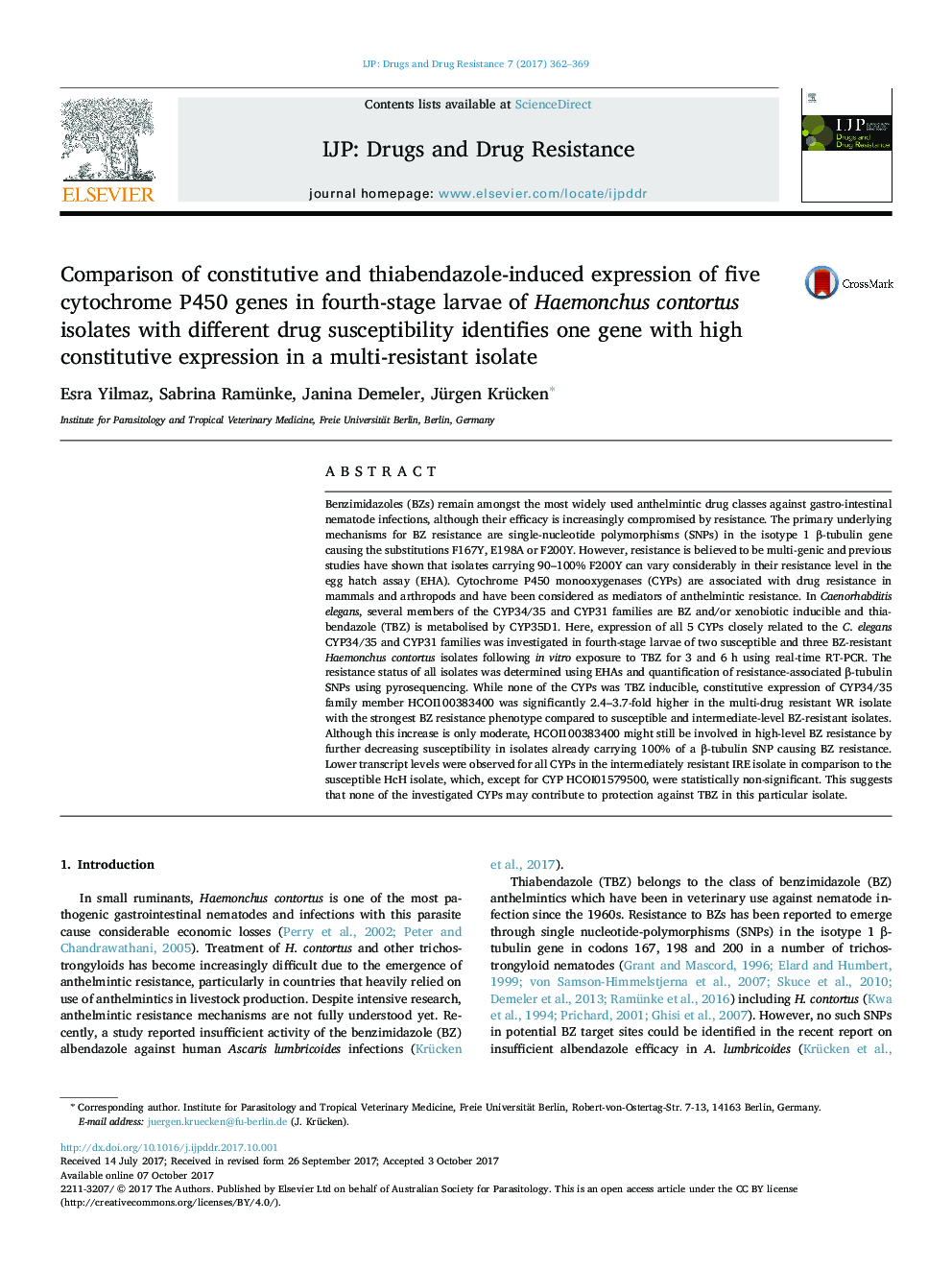| Article ID | Journal | Published Year | Pages | File Type |
|---|---|---|---|---|
| 5517848 | International Journal for Parasitology: Drugs and Drug Resistance | 2017 | 8 Pages |
â¢Comparison of 5 Cytochrome P450 expression in five Haemonchus contortus isolates.â¢No thiabendazole-inducible expression of 5 Cytochrome P450 members.â¢Increased basal expression of a Cytochrome P450 in a multi-drug resistant isolate.
Benzimidazoles (BZs) remain amongst the most widely used anthelmintic drug classes against gastro-intestinal nematode infections, although their efficacy is increasingly compromised by resistance. The primary underlying mechanisms for BZ resistance are single-nucleotide polymorphisms (SNPs) in the isotype 1 β-tubulin gene causing the substitutions F167Y, E198A or F200Y. However, resistance is believed to be multi-genic and previous studies have shown that isolates carrying 90-100% F200Y can vary considerably in their resistance level in the egg hatch assay (EHA). Cytochrome P450 monooxygenases (CYPs) are associated with drug resistance in mammals and arthropods and have been considered as mediators of anthelmintic resistance. In Caenorhabditis elegans, several members of the CYP34/35 and CYP31 families are BZ and/or xenobiotic inducible and thiabendazole (TBZ) is metabolised by CYP35D1. Here, expression of all 5 CYPs closely related to the C. elegans CYP34/35 and CYP31 families was investigated in fourth-stage larvae of two susceptible and three BZ-resistant Haemonchus contortus isolates following in vitro exposure to TBZ for 3 and 6 h using real-time RT-PCR. The resistance status of all isolates was determined using EHAs and quantification of resistance-associated β-tubulin SNPs using pyrosequencing. While none of the CYPs was TBZ inducible, constitutive expression of CYP34/35 family member HCOI100383400 was significantly 2.4-3.7-fold higher in the multi-drug resistant WR isolate with the strongest BZ resistance phenotype compared to susceptible and intermediate-level BZ-resistant isolates. Although this increase is only moderate, HCOI100383400 might still be involved in high-level BZ resistance by further decreasing susceptibility in isolates already carrying 100% of a β-tubulin SNP causing BZ resistance. Lower transcript levels were observed for all CYPs in the intermediately resistant IRE isolate in comparison to the susceptible HcH isolate, which, except for CYP HCOI01579500, were statistically non-significant. This suggests that none of the investigated CYPs may contribute to protection against TBZ in this particular isolate.
Graphical abstractDownload high-res image (188KB)Download full-size image
